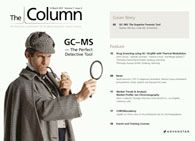CVD in Indigenous Australians
A study carried out in Australia has measured plasma carotenoids concentrations and looked for factors in the indigenous Australian population that affect it, with particular focus on the participants? socioeconomic status.
Indigenous Australians are at increased risk of cardiovascular disease compared to other Australians, a risk that is inversely associated with plasma carotenoids concentrations. As plasma carotenoids are biomarkers for fruit and vegetable intake, poor diet and low socioeconomic status of the indigenous Australians are generally considered to be contributors to this. A study carried out in Australia1 has measured plasma carotenoids concentrations and looked for factors in the indigenous Australian population that affect it, with particular focus on the participants’ socioeconomic status.
Socioeconomic status was determined by self-reported information on education, household size, employment, home ownership and income. Plasma carotenoid levels were measured by high performance liquid chromatography and then linear regression analysis was used to determine relationships between the two factors.
The study found that while self reported intakes of fruit and vegetables were positively associated and intake of takeaway foods inversely associated, adjusting for dietary intake did not completely explain the associations between SES and plasma carotenoids. The concentrations were found to be lower in than the mean for the non-indigenous population.
It was concluded that higher SES did correspond to higher concentrations of plasma carotenoids, so that increasing accessibility of fruit and vegetables as well as reducing smoking rates could improve health, but that there may be additional factors contributing to lower concentrations in Indigenous Australians.
1. A. Hodge et al., BMC Public Health, 11(76) (2011).
This story originally appeared in The Column. Click here to view that issue.
Evaluating the Accuracy of Mass Spectrometry Spectral Databases
May 12th 2025Mass spectrometry (MS) can be effective in identifying unknown compounds, though this can be complicated if spectra is outside of known databases. Researchers aimed to test MS databases using electron–ionization (EI)–MS.

.png&w=3840&q=75)

.png&w=3840&q=75)



.png&w=3840&q=75)



.png&w=3840&q=75)










